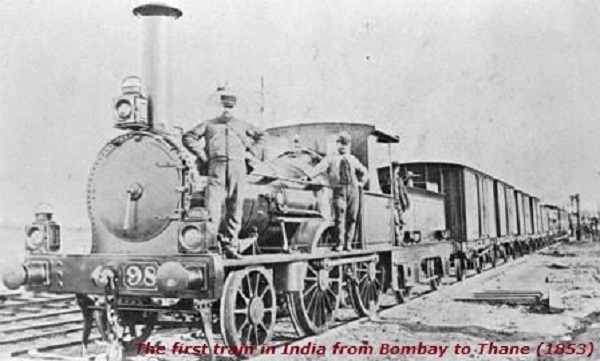
- Modern Indian History Tutorial
- Modern Indian History - Home
- Decline of Mughal Empire
- Bahadur Shah I
- Jahandar Shah
- Farrukh Siyar
- Muhammad Shah
- Nadir Shah’s Outbreak
- Ahmed Shah Abdali
- Causes of Decline of Mughal Empire
- South Indian States in 18th Century
- North Indian States in 18th Century
- Maratha Power
- Economic Conditions in 18th Century
- Social Conditions in 18th Century
- Status of Women
- Arts and Paintings
- Social Life
- The Beginnings of European Trade
- The Portuguese
- The Dutch
- The English
- East India Company (1600-1744)
- Internal Organization of Company
- Anglo-French Struggle in South India
- The British Conquest of India
- Mysore Conquest
- Lord Wellesley (1798-1805)
- Lord Hastings
- Consolidation of British Power
- Lord Dalhousie (1848-1856)
- British Administrative Policy
- British Economic Policies
- Transport and Communication
- Land Revenue Policy
- Administrative Structure
- Judicial Organization
- Social and cultural Policy
- Social and Cultural Awakening
- The Revolt of 1857
- Major Causes of 1857 Revolt
- Diffusion of 1857 Revolt
- Centers of 1857 Revolt
- Outcome of 1857 Revolt
- Criticism of 1857 Revolt
- Administrative Changes After 1858
- Provincial Administration
- Local Bodies
- Change in Army
- Public Service
- Relations with Princely States
- Administrative Policies
- Extreme Backward Social Services
- India & Her Neighbors
- Relation with Nepal
- Relation with Burma
- Relation with Afghanistan
- Relation with Tibet
- Relation with Sikkim
- Relation with Bhutan
- Economic Impact of British Rule
- Nationalist Movement (1858-1905)
- Predecessors of INC
- Indian National Congress
- INC & Reforms
- Religious & Social Reforms
- Religious Reformers
- Women’s Emancipation
- Struggle Against Caste
- Nationalist Movement (1905-1918)
- Partition of Bengal
- Indian National Congress (1905-1914)
- Muslim & Growth Communalism
- Home Rule Leagues
- Struggle for Swaraj
- Gandhi Assumes Leadership
- Jallianwalla Bagh Massacre
- Khilafat & Non-Cooperation
- Second Non-Cooperation Movement
- Civil Disobedience Movement II
- Government of India Act (1935)
- Growth of Socialist Ideas
- National Movement World War II
- Post-War Struggle
- Clement Attlee’s Declaration
- Reference & Disclaimer
Transport & Communication
Up to the middle of the 19th century, the means of transport in India were backward. They were confined to bullock-cart, camel, and packhorse.
The British rulers soon realized that a cheap and easy system of transport was a necessity if British manufactures were to flow into India on a large scale and her raw materials secured for British industries.
The British rulers introduced steamships on the rivers and set about improving the roads.
Work on the Grand Trunk Road from Calcutta to Delhi began in 1839 and completed in the 1850's. Efforts were also made to link by road the major cities, ports, and markets of the country.
Development of Railway
The first railway engine designed by George Stephenson was put on the rail in England in 1814. Railways developed rapidly during the 1830s and 1840s.
The earliest suggestion to build a railway in India was made in Madras in 1831. But the wagons of this railway were to be drawn by horses.
Construction of steam-driven railways in India was first proposed in 1834 in England. It was given strong political support by England's railway promoters, financiers, and mercantile houses trading with India, and textile manufacturers.
It was decided that the Indian railways were to be constructed and operated by private companies who were guaranteed a minimum of five per cent return on their capital by the Government of India.
The first railway line running from Bombay to Thane was opened to traffic in 1853.

Lord Dalhousie, who became Governor-General of India in 1849, was an ardent advocate of rapid railway construction.
Dalhousie proposed a network of four main trunk lines which would link the interior of the country with the big ports and inter-connect the different parts of the country.
By the end of 1869, more than 4,000 miles of railways had been built by the guaranteed companies; but this system proved very costly and slow, and so in 1869 the Government of India decided to build new railways as state enterprises. But the speed of railway extension still did not satisfy officials in India and businessmen in Britain.
After 1880, railways were built through private enterprises as well as state agency.
By 1905, nearly 28,000 miles of railways had been built. The railway lines were laid primarily with a view to link India's raw material producing areas in the interior with the ports of export.
The needs of Indian industries regarding their markets and their sources of raw materials were neglected. Moreover, the railway rates were fixed in a manner so as to favor imports and exports and to discriminate against internal movement of goods.
Several railway lines in Burma and North-Western India were built at high cost to serve British imperial interests.
Postal and Telegraph System
The British also established an efficient and modern postal system and introduced the telegraph.
The first telegraph line from Calcutta to Agra was opened in 1853.
Lord Dalhousie introduced postage stamps. Previously cash payment had to be made when a letter was posted. He also cut down postal rates and charged a uniform rates.